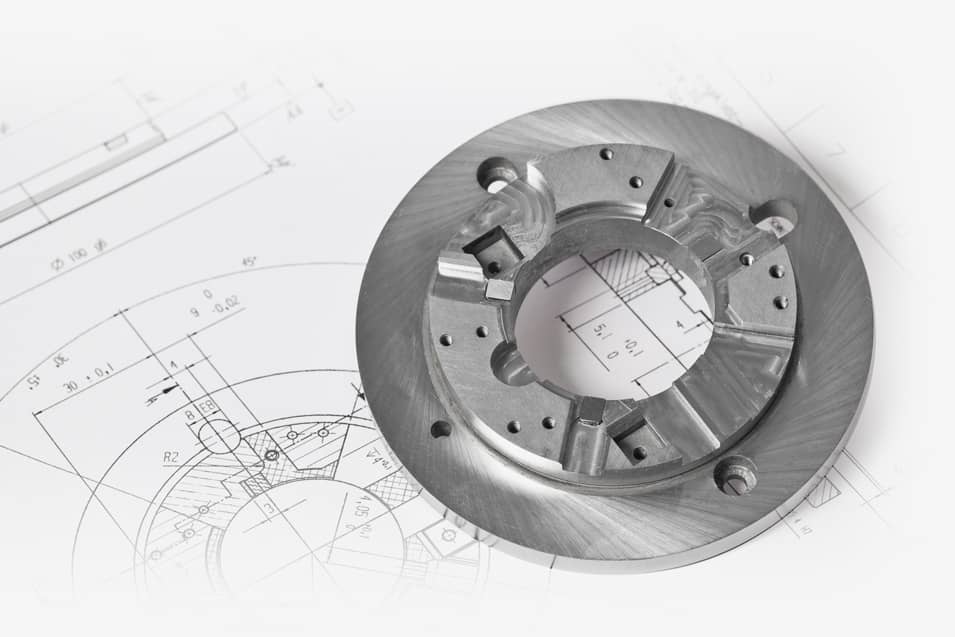What is Laser Cutting?
In laser cutting, also known as micro laser cutting, we use a powerful laser beam to cut or engrave material. The laser beam is guided, shaped, and focused. When it hits the material, it heats it so intensely that it melts or evaporates. This process is known for its high precision, speed, and versatility.
It is used to precisely cut materials such as metals, plastics, and even ceramics, without direct contact with the material. This prevents tool wear and deformation or damage to the workpiece.
What is Laser Cutting Used For?
Laser cutting is used in many different sectors, from making small, precise metal parts for medical equipment to building components for larger machines. This method is very accurate and fast, making it perfect for developing new products or prototypes and producing larger quantities.
At Lasertec, we exclusively process sheet material from 5µm to 2 mm thick.
Laser Cutting Techniques
In laser cutting, a laser beam with a small focus diameter is often used, which results in a minimal cutting line and almost no cutting waste. It is important to keep the cutting kerf open throughout the cutting process, so it does not close as the laser beam passes.
We distinguish three laser cutting techniques:
- Laser fusion cutting
- Flame cutting
- Laser sublimation cutting
Laser Fusion Cutting
Laser fusion cutting, also known as laser melt cutting, is applied to materials up to 15 mm thick.
During this process, nitrogen or argon is used as the cutting gas. This is driven through the cutting joint at a pressure between 2 and 20 bar and does not react with the metal surface in the cutting joint, unlike flame cutting.
The molten material is then blown away by the gas.
Flame Cutting
Flame cutting, also known as oxy-fuel cutting, involves using air or oxygen to heat the material to its ignition temperature.
Flame cutting requires a laser cutter with less power than needed for laser fusion cutting.
The advantage is that this technique is suitable for materials up to 25 mm thick and cuts faster than laser fusion cutting.
The downside is that it provides less neat finishes and is mainly used for low-alloy steel types.
Laser Sublimation Cutting
This technique is aimed at organic materials and plastics. It is primarily used for fine cutting tasks where very high-quality cutting edges are needed.
The laser cutter raises the temperature to the vaporization point of the material, with the generated vapor needed to keep the pressure high enough and the cutting kerf open.
The disadvantages of this technique are the higher required power of the laser and a slower cutting speed.
Moreover, the cutting depth is limited, which sometimes leads to multiple cutting passes to cut through the material.
What is the Difference Between Laser Ablation and Laser Cutting?
Laser ablation is a process where material is removed layer by layer, whereas in laser cutting, the material is cut through. Ablation is often used for surface processing, while laser cutting is ideal for cutting out parts.
With laser ablation, you can also cut material, but the downside is that it takes much longer because you remove the material layer by layer. The disadvantage of laser cutting is that plate material can be left behind due to melting. If that is not desired, then we often apply ablation.
In Which Markets Do We Succesfully Apply it?
Laser cutting can be used in various markets such as aerospace, automotive industry, and medical technology. At Lasertec, we never take on projects where we only do laser cutting. Often, it is part of the process and other disciplines are applied, such as mechanical bending and laser ablation.
The Advantages of Microlaser Cutting
The advantages are that it is very fast, the process is very precise, and you can do it with many different materials. The method allows for complex cuts that are not achievable with traditional methods. Moreover, due to the contactless nature of the process, there is less chance of material damage.
Why Choose Laser Cutting at Lasertec
At Lasertec, we distinguish ourselves in the world of laser cutting with our unique approach and advanced techniques. Our specialty lies in cutting extremely thin materials, where we handle thicknesses significantly thinner than conventional sheet material - often thinner than a tenth of a millimeter.
In addition, we often combine laser cutting with one of our other disciplines, where everything is in-house, and you don't have to go to another supplier.
Laser cutting is a technique that offers precision and versatility. We are able to meet the complex and varied needs of our customers. For more information about our laser cutting capabilities or any of our other services? Please contact us at
+31 180 644 744
or fill in the contact form.
Process combination
Through an intelligent combination of process and know-how, we exceed the limits of what’s possible
Competences
Thanks to our years of continuous development, we offer many possibilities within our company. The laser today represents a strong and reliable process that can be adapted to different applications. Most laser capabilities are accessible within the same process. Imagine: texturing a surface, engraving your logo, and cutting parts with a single laser.
Numbers
Our success would not be achievable without a significant number of different laser
production units, years of experience and most importantly, a strong team.
More than
25
Laser production units
More than
37
People
More than
27
Years experience
















